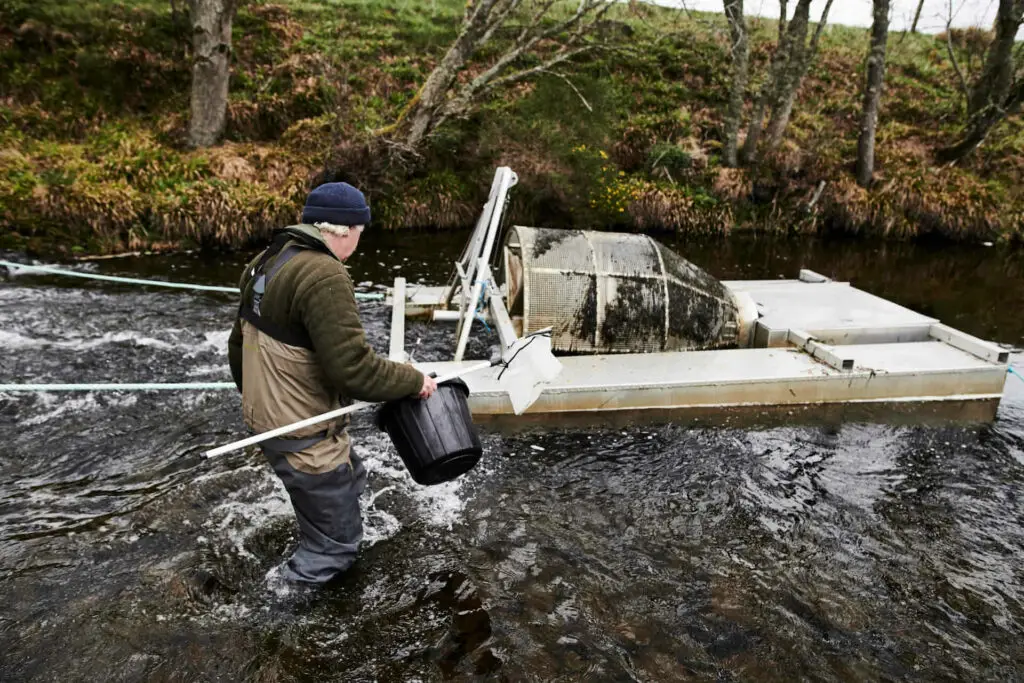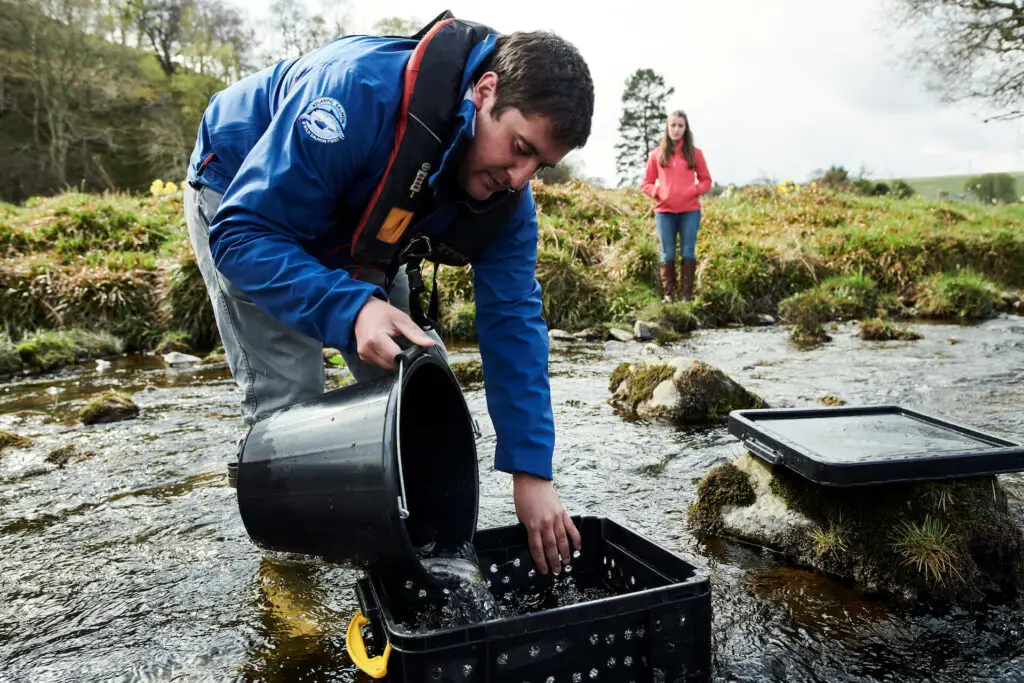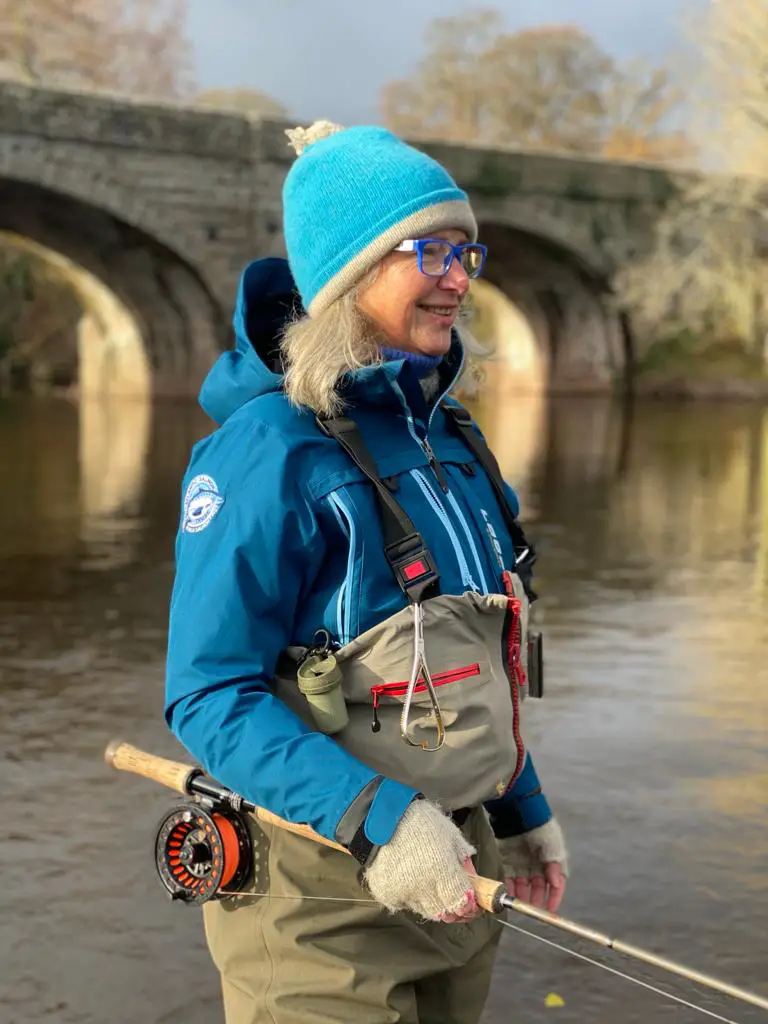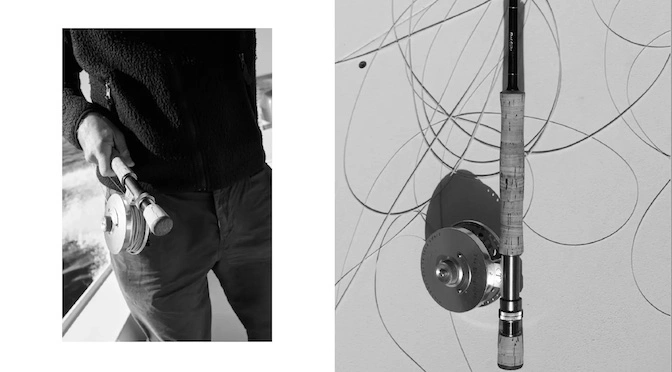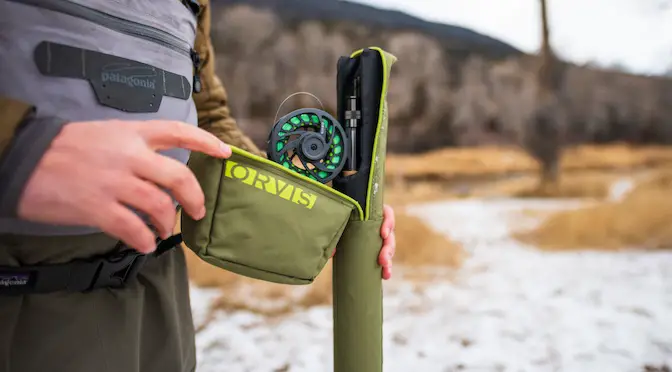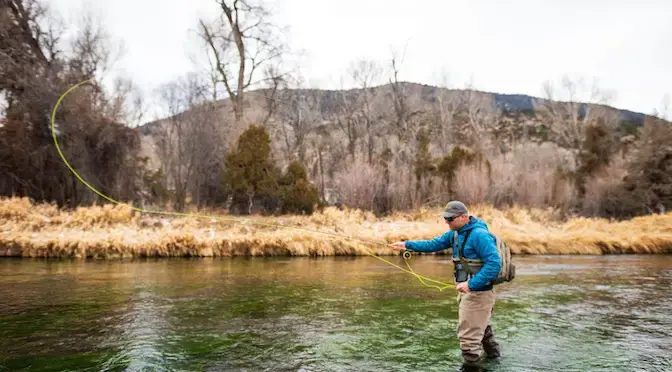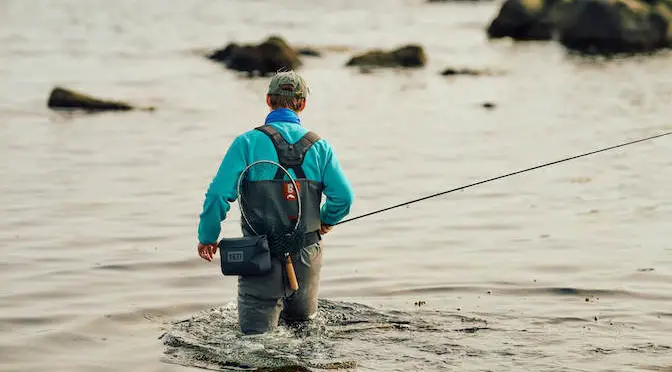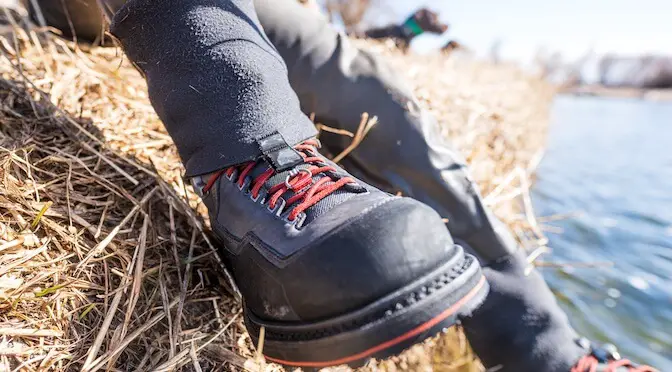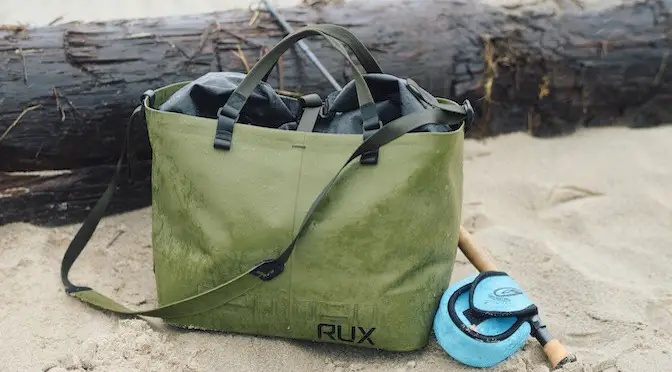Last updated on January 9th, 2024.
- Understanding Fly Lines: The Heartbeat of Fly Fishing - April 23, 2024
- The Basics of Fly Fishing Etiquette - April 22, 2024
- Fly Fishing Gear Essentials: What You Need to Start - April 18, 2024
The decline of wild Atlantic Salmon in recent times has been dramatic. The Atlantic Salmon Trust fights this trend with evidence-based conservation.
We spoke to Tiggy Pettifer about a massive current research project, differences between Atlantic Salmon and Seatrout conservation and how the stocks of Wild Atlantic Salmon can make a comeback.
The population of wild salmon in the Atlantic has fallen from 8 to 10 million in the 1980s to about 2 to 3 million as of now. What are some of the reasons for this decline?
Human pressure is the greatest, creating climate change, which in turn creates its own problems. Salmon would be just fine without so many people. So it is up to us to give them the space to adapt, whether through reducing pollution, ceasing overfishing or reversing habitat destruction.
What role do Atlantic Salmon play in regards to ecosystems beyond their own survival?
Salmon are the canary of our rivers and oceans. They tell us how the ecosystems are working. They weigh just over an ounce leaving their home streams coming back as an 10 lber with all the nutrients from the oceans. When they die they leave behind the nutrients into upland areas. Sea eagles, otters, freshwater pearl mussels for example all thrive off our salmon.
Two of the Atlantic Salmon Trust’s projects are the Moray Firth Tracking Project and the West Coast Tracking Project. Tell us a little more about these projects of the Atlantic Salmon Trust.
Firstly the Moray Firth: In 2019 we did the first and largest ever tagging project in Europe. The goal was to try and find out what was happening to our smolts. 800 smolts were tagged on 7 rivers. The reason for the Moray Firth was that 20% of all Scottish salmon come into the Moray Firth. With 15 million pings we have been working through this information. We discovered that over 50% of smolts went missing before they even reached the sea. This was not a case of us missing the fish but rather that they were not there! Some rivers did better than others. The worst loss was over 70%. This has given us a good indication of where the most help needs to be put in place.
We tried to do the second phase in the spring of 2020. Due to covid we had to shelve it. So spring 2021 is going to be so important. We are ready to go. We wish to find out that the results were not due to unusual conditions or other factors. Our focus will also be on where the majority of smolts went missing so that we can find out why.
By 2022 with the evidence that we have garnered from years 1 and 2 we will work with policy makers to try and use practices that will make a difference to the smolts’ increased survival. As the great Hugh Falkus once said: “If you don’t have a smolt factory you won’t get your salmon back.” Never a truer word said. We must protect our smolts!
The West Coast : This is a hugely exciting project as so many people are aware of the crisis on the West Coast. Marine Scotland, Fisheries Management Scotland and the Atlantic Salmon Trust will track smolts over a three year period. We want to see where their (the smolts) migratory paths go through this incredible coast line. We are working with industries such as aquaculture as we all need to know where these wild fish go. Then they can be better protected and, crucially, more survive. Whilst some would suggest working in partnership with fish farmers is controversial, our science is always fiercely independent and transparent.
10 Rivers will be tagged from the Nith in the south to the Laxford in the far north, on the mainland and the Grimersta and Laxay on the Hebrides.
How important is it to work across borders and nations and does Brexit make this more complicated?
Thankfully salmon don’t recognise borders or Brexit! We are working with friends worldwide: the Icelandics, the Americans on the East Coast, the Norwegians. Also the North Americans on the West coast are having the same crisis. So working together to form the likely suspects framework is integral to our work. As an international community we can really move things forward. We also have an awareness of the problems we are ALL dealing with. Vital!
The world has “slowed down” in recent months due to Covid. Has there been an effect of that on wild Atlantic Salmon?
2020 was an average year in the UK. If anything our salmon have been more appreciated by all. The grilse run was better which gave all an uplift. But that tailed off towards the end of the year. But no it didn’t really make any difference. Our salmon are still battling the problems that I said at the beginning.
What can the individual fly fisherman and woman do to help protect wild species in Europe such as Atlantic salmon and sea trout?
Help overcome apathy and not take rivers or salmon and sea trout for granted. Either start loving them or we will lose them forever!
To what degree can the situation of Atlantic Salmon and Sea trout be compared?
They have different challenges and we need to better understand each species on its own merits even though they both go to sea. We have to sort out our rivers where all the young start their lives.
How can the next generation be convinced that it’s worth fighting for wild fish such as Atlantic Salmon?
If we go back in history there once were so many salmon running the Thames that people asked not to be fed them! Most people don’t know that. We need to educate the next generation. The young of today are far more involved in our climate and the “well being” of our planet. Sir David Attenborough has said the future of salmon is in our hands. By educating and encouraging the young there is a hope that we can stop this crisis and keep this iconic fish swimming in our rivers. We have to act now as the clock is spinning out of control.
Click here to learn more about the AST’s work or to get involved

